5 Sensational STEM Activities for Toddlers
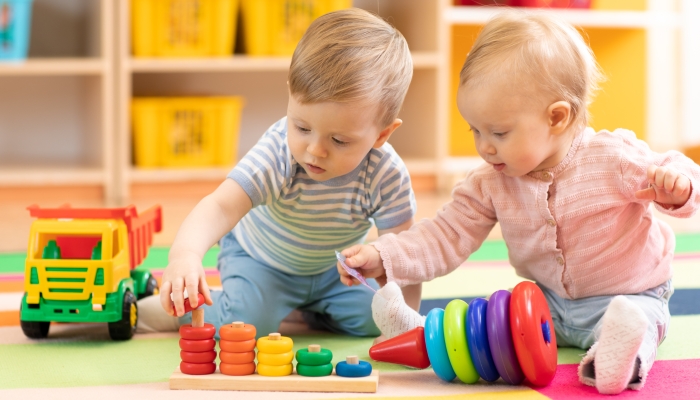
- Toddlers engage in STEM learning naturally through their play and exploration.
- Engaging in STEM projects early on has important positive outcomes for children’s language, literacy, and understanding of math when they get to school.
- You can easily encourage your child’s natural interest in STEM with fun sensory and hands on learning activities.
- You only need a few materials to engage in STEM activities with your toddler.
Catching bubbles to watch them burst. Spilling water through different cups in the bath. Building a house with the cardboard boxes you left with the recycling. These are activities almost all children do, often without prompting from you. All of these are also examples of great STEM thinking.
STEM stands for science, technology, engineering, and mathematics, and your toddler engages with all of them daily through their play. You can encourage their natural love of this type of learning, and the good news is you don’t need to put on a lab coat to do it.
Check out these sensational STEM activities for toddlers that are so much fun you’ll see science and math in a new light.
STEM Activities for Toddlers: What You Need to Know
You may have read about or heard a lot about a new emphasis in schools on STEM. That term can seem very academic and intimidating when applied to toddlers. You might think, “Wait, my two-year-old has to study engineering now? What happened to nursery rhymes?”
The good news is that introducing STEM topics to toddlers is very easy because they already engage with these concepts naturally every day, all day long, through their play.
When toddlers build a tower with wooden blocks, they learn simple engineering. When they try different blocks to make a stronger base, they’re using scientific problem-solving skills. When they count the blocks or sort them by shape, that’s basic math.
Doing engaging STEM projects with toddlers and preschoolers doesn’t require you to dust off your textbooks or buy tons of equipment. Fun STEM activities with children this age harness their natural curiosity and desire to explore and understand the world.
You can encourage their learning with everyday experiences and household objects.
Benefits of STEM in Childhood Development
According to the STEM Innovation for Inclusion in Early Education Center (STEMIE), part of the U.S. Department of Education, there are many benefits to an early focus on STEM activities with toddlers and preschoolers, which include:
- Increased social communication skills.
- Increased language and literacy at school age.
- Increased opportunities for mathematical thinking.
In addition, the STEM-related activities also help toddlers and older kids work on their fluid reasoning skills, the skills they draw on for creative problem-solving.
As you can see, for younger kids, STEM activities promote language, literacy, problem-solving, and mathematical understanding they’ll use later in school when they begin their formal learning in elementary school.

When Is the Best Time to Introduce STEM to Toddlers?
There’s no need to stress about when to start STEM learning with your toddler if you haven’t thought about doing it before. Your child has already done tons of STEM work themselves through their play without either of you realizing it.
However, in an interview with U.S. News and World Report, Erika Shugart, Executive Director of the National Science Teaching Association, stated, “It’s never too early to start to engage young children in science and STEM.”
So you can start right now to enhance your toddler’s natural curiosity and exploration through sensory play and hands on learning experiences.
How to Support Your Toddler to Learn STEM
When it comes to encouraging toddler STEM learning, planned science experiments are great. However, you don’t always have to structure your child’s engagement with STEM activities.
Here are some simple ways to support your toddler’s interest in science, technology, engineering and math:
Create a rich learning environment.
Make sure your child has easy access to toys and materials that will engage their learning. Keeping items around like cardboard boxes, cups, blocks, toys with wheels, and sensory toys will stimulate your child’s interest in experimentation and problem-solving.
Use open-ended questions.
Encourage them to explain their ideas using open-ended questions when you’re talking to your child about what they’re doing. For example, ask them what, why, and how they built that ramp or mixed those paints.
Ask for their support with your activities.
Can I help? This is a question you hear at least ten times a day. When it comes to stimulating your toddler’s interest in STEM, the answer is “yes!” Cooking and baking with you, for example, are great opportunities to learn about weight, measure, texture, color, water, shape, and many other STEM-related ideas.
Recognize STEM opportunities.
Planning organized science activities with your toddler can be a lot of fun. However, there are many opportunities throughout the day to enhance your child’s exploration and learning.
Recognize these when they’re happening and talk about them. For example, when they throw a pebble in a puddle or a pond, talk about the ripples in the water. When they roll cars down the toy garage for an hour, encourage them to try other objects, like balls or blocks, to see what else might happen.
Bring STEM learning outdoors.
Preschool STEM activities aren’t limited to doing a quiet science experiment in the kitchen. There are lots of opportunities to learn about physics, engineering, and math while outside or in the playground.
Outdoor climbing toys, slides, jungle gyms, swings, and seesaws allow your kids to work on spatial awareness and gross motor skills. They’re also a time when children explore concepts of gravity, momentum, balance, and force with their own bodies.
Playing outside is a great time to introduce these terms to your kids, and they are among some of the best toddler STEM activities.
5 STEM Activities for Toddlers to Enjoy and Learn
Try some of these fun toddler STEM activities, some of which work great for multiple ages.
Fun with Ramps
Explore STEM ideas of gravity, momentum, and force by rolling different toys down a ramp. Make your ramp out of a cardboard box or a piece of plywood on a brick, or try this outside with your toddler’s slide.
Gather objects of different sizes and weights, like balls, cars, blocks, and other things your toddler wants to experiment with. Send these objects down the ramp and discuss your results. Which objects go faster or slower? Why?
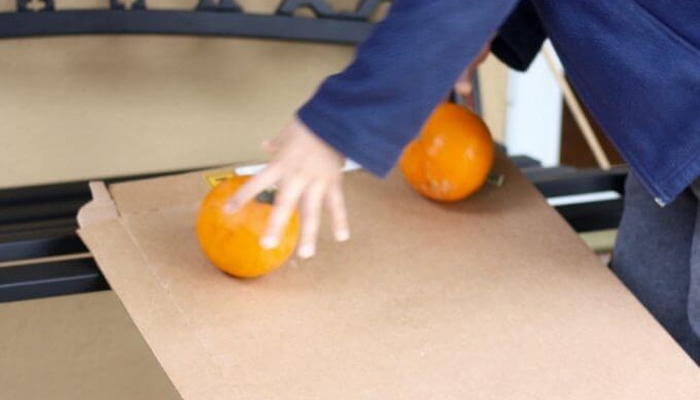
Floating Fun
Teach your toddler about water, air, weight, and buoyancy. This toddler STEM activity can be done at bathtime, in the kitchen sink, or outside with the kiddie pool or a bucket.
Fill your basin, tub, or pool with water. Gather different objects and see which ones float. Try toy boats, plastic cups, chalk, balls, or balloons. Make boats out or paper, aluminum foil, or milk or juice containers.
Let your child guess which ones will float and why before you put them in the water. Then, talk about why some things float and others don’t.
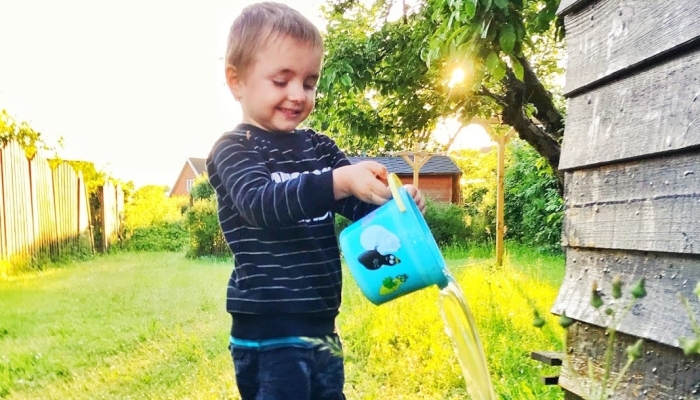
Bubbles, Bubbles, Bubbles
There are so many toddler STEM concepts to learn from bubbles about water, surface tension, shape, and more. Try any of the following simple STEM projects:
- Learn about measuring and mixing by making your own bubble mixture using water and dish soap.
- Make your own bubble wands by bending pipe cleaners into different shapes to see if they change the shape of the bubbles.
- Try to catch bubbles on paper, with a wand, or a twig to see how long they last without popping.
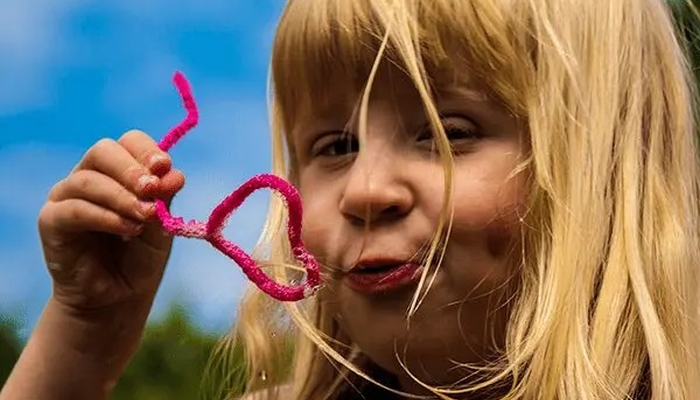
Playing With Shadows
Toddlers are fascinated by shadows. When they first notice their own shadows, usually outside, a million questions follow. Help them answer those with some fun shadow games.
Cut out some simple shapes from paper together. You can even cut out doll and animal shapes to work on fine motor skills. Then, ask your child to gather other things around the house that they’d like to experiment with.
Turn off the lights, grab a flashlight to shine at a blank wall, and have your toddler hold different items in front of the light. This is a really easy STEM challenge to work on creative thinking skills and stimulate the imagination.
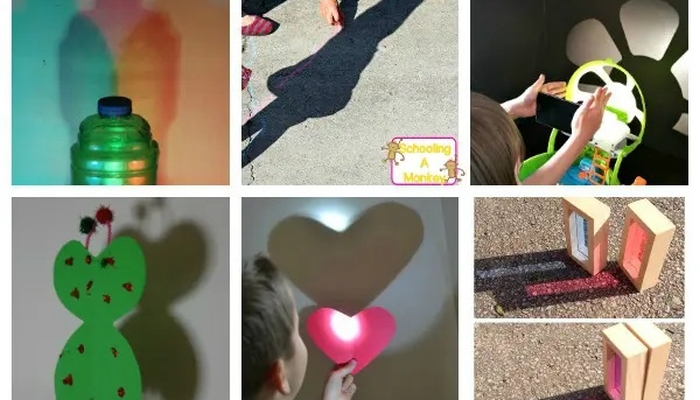
Build With Boxes
Building and block play are excellent for working on engineering skills. So set this engineering challenge for your toddler.
Gather up some unconventional building materials like cardboard tubes, cereal boxes, bubble wrap, empty plastic food containers, and other clean recyclables you have lying around.
Have your child see what kind of building they can create with things we would normally throw away. You can talk about balance, weight, height, and other concepts and get in a lesson about reusing and recycling as well.
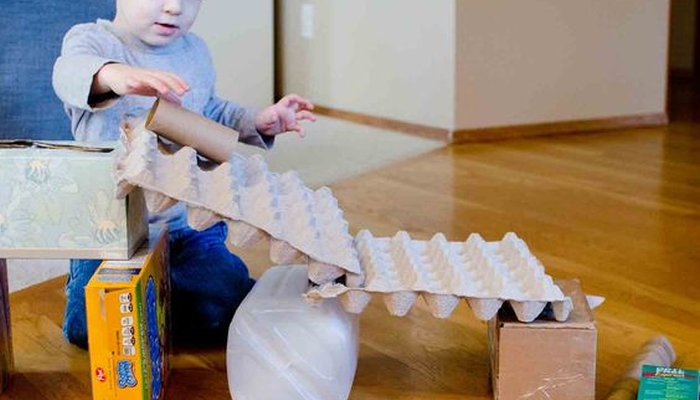
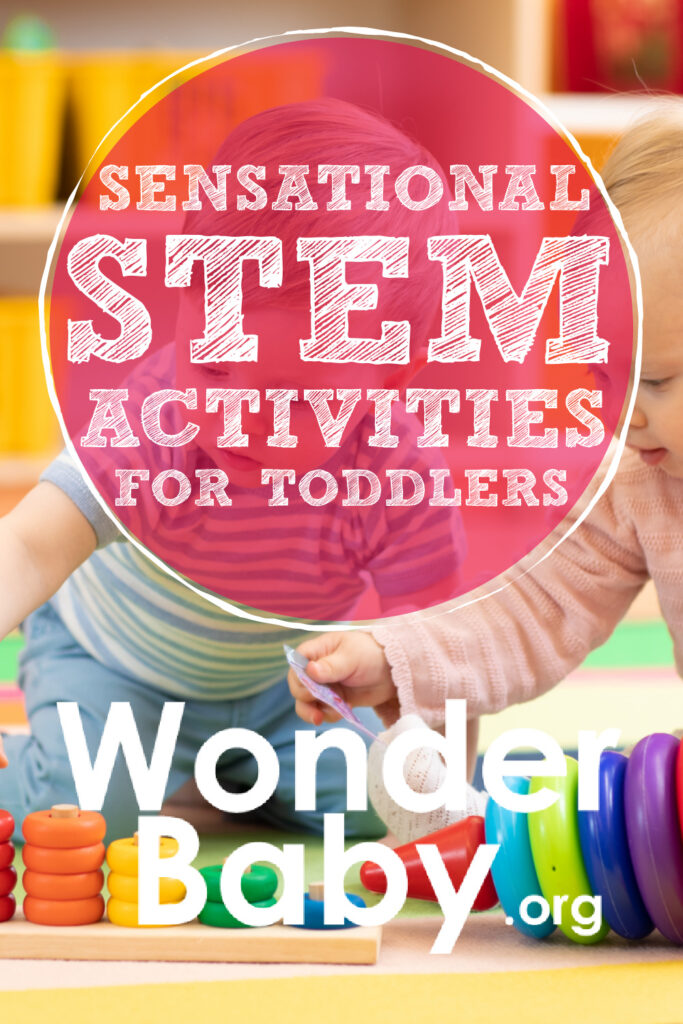
Related Posts
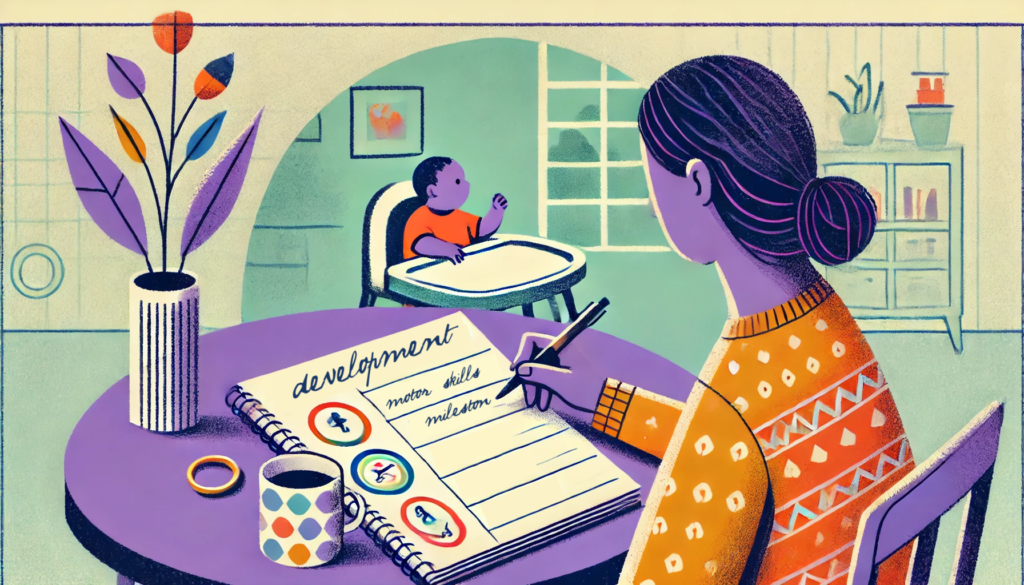
Development, Special Needs
How to Track Milestones for Developmentally Delayed Babies
Parents of developmentally delayed babies can explore practical tools and strategies to track milestones, celebrate progress, and support their child’s unique developmental journey.

Fine and Gross Motor
5 Alternatives to Tummy Time for Babies with Motor Development Challenges
Does your baby struggle with tummy time due to motor development challenges? These alternatives to tummy time will offer the same benefits.

Development
Should Twins Share a Room?
Wondering if your twins should share a room? We’ll explore the pros and cons of room-sharing for twins right here before you make your decision.